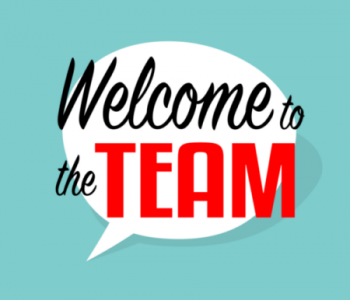ISSUE
17
February 2024
All Center News
Comprehensive Behavioral Health Center of St. Clair County Inc.
505 South Eighth Street • East St. Louis, IL 62201
Joseph Harper
Executive Director
Jonnie Barkley
Executive Secretary
(618) 482-7330
Brian Stewart
Chief Operating Officer
(618) 482-7630
Dr. Lawrence Casey
Medical Director
(618) 482-7630
Mary Jackson
Quality Assurance
(618) 482-7337
Shakari Dorsey
Human Resources Director
(618) 482-7381
LT Nash
Building Manager
(618) 482-7633
David McCosky
Inventory Specialist
(618) 261-7010
Rachel Ball
Records
(618) 482-7626
Mary Neufeld-Wall
Tele-Health Manager
(618) 482-2574
Rita Byrd
Therapy & Transition
(618) 482-7617
Rena Vantreece
Child & Adolescent
(618) 482-7613
Daryl Rice
Dir. SMARTS/ARTS
Methadone Services
(618) 261-7041
Gia Moore
Parenting for Success
(618) 482-7354
Keonna Pittman
Food & Nutrition
(618) 261-7039
Kelly Clemons
Housing Program
(618) 261-7616
Mike Nichols
Crisis Manager
(618) 261-7023
Carla Ellis
Assistant Program Manager
(618) 482-8401
Karen Jamison
Residential Services
(618) 274-6422
Aubrey Yates
Fathers & Families
(618) 482-7348
Brian Rowe
Director Revenue Cycle
(618) 261-7007

Attribution: Homer G. Phillips. Painting by Vernon Smith [Missouri Historical Society, St. Louis, Objects Collection, 2016-058-0001]. Use permitted for educational purposes.
Celebrating Black History

Attribution: Homer G. Phillips. Painting by Vernon Smith [Missouri Historical Society, St. Louis, Objects Collection, 2016-058-0001]. Use permitted for educational purposes.
This newsletter’s purpose is to share information about The Center’s people and activities [expander_maker id=”2″ more=”Read more” less=”Read less”] in each department and by each employee, in order to highlight the contributions made by all in helping The Center reach its goals.
The Center’s Internet address is: cbhc1.org
You can also check us out on Facebook.
Front Desk
(618) 482-7330
Hours of Operation
8:00am – 5:00pm [/expander_maker]
Memo from Management
CBHC is committed to serving our community and representing our community. I was reminded of this during the dedication of The Living Room. [expander_maker id=”2″ more=”Read more” less=”Read less”]
During the dedication of the Living Room to Executive Director Marsha R. Johnson, speakers repeated several times that Ms. Johnson worked hard and fought to make sure that when we built our building we would be making a long-term commitment to the people we serve.
This includes committing to our physical presence in historic East St. Louis where some of our region’s most marginalized residents can easily access our services. As I think about Black History Month, I think about the many impactful Black Americans who came from the region that we call home.
I think of how much would be lost without the people who nurtured and cared for these exceptional people, and I am proud that we stay committed to supporting the next generation of impactful Black Americans that will come from East St. Louis, St. Clair County, and the Greater St. Louis region.
Each of you is at the forefront of creating opportunity and building equity for each individual that we serve.
So, like my predecessor, Ms. Johnson, let’s double down on serving our neighbors in St. Clair County and beyond. Happy Black History Month to all of you and thank you for all you do to serve our clients!
[/expander_maker]
Black History Month
Welcome to Black History Month! The theme this year is “ African Americans and the Arts”. [expander_maker id=”2″ more=”Read more” less=”Read less”]
Please take a moment to look at the flyer from the Association for the Study of African American Life and History for more details.
Thanks to Ms. Barkley for decorating our lobby to celebrate the month. We are planning a luncheon later this month. [/expander_maker]
Parking Proticol
A few reminders for those of you who work at our Main Campus
[expander_maker id=”2″ more=”Read more” less=”Read less”]
- The parking lot at the front of the building is for clients and visitors ONLY.
- Staff should pass through the gates to park in the staff parking lots.
- Handicap, Clinical Director, and Employee of the Month parking is reserved at ALL TIMES and should not be used without proper credentials, even for a short time.
- Parking on the grass is strictly prohibited. Park only in dedicated spaces.
- Parking rules are enforced by ESLPD and by Center Staff. If your vehicle must be towed, you will be responsible for paying towing fees.
[/expander_maker]
 February’s Employee of the Month
February’s Employee of the Month
Ms. Carolyn Nichols, Case Manager for Therapy & Transitional Services (TTS) receives the honor of being February’s Employee of the Month.
Ms. Nichols goes above and beyond her normal duties when it comes to her clients. From the time she started working at The Center, her work has been exemplary.
[expander_maker id=”2″ more=”Read more” less=”Read less”]
Her skills as a practitioner are evident, as she is able to routinely de-escalate situations efficiently without raising her voice. She conducts herself in a respectful, professional manner when she needs to quickly gain compliance from a frustrated consumer.
She also sets a wonderful example for all of us here at The Center. No matter how long she is going to be out of her office or out of the building she always informs the front desk of her whereabouts.
Let’s give Ms. Nichols a round of applause for not only her dedication to her clients but also her commitment to The Center. [/expander_maker]
Who Cares about a Buck Tooth Rodent’s Shadow? (Groundhog’s Day History)

Groundhog Day is celebrated on February 2nd, originates from a Pennsylvania Dutch superstition that if a groundhog emerging from its burrow sees its shadow due to clear weather, winter will persist for six more weeks. [expander_maker id=”2″ more=”Read more” less=”Read less”]
Conversely, if it does not see its shadow because of cloudiness, spring will arrive early. The tradition stems from ancient European weather lore, wherein a sacred bear or badger made weather predictions.
(By the way, I wonder who is more accurate the weatherman or the groundhog?)
The specific practice of Groundhog Day began in 1887 in Punxsutawney, Pennsylvania, with Punxsutawney Phil, a groundhog, at its center.
This event draws thousands annually, representing a quirky yet beloved American tradition. [/expander_maker]
February’s Birthdays
Wishing a BIG happy birthday to all of those in the CBHC family!
Congrats!!
Congratulations to our neighbors across the river on winning the big game!
Phil didn’t see his shadow and you weren’t scared either.
Who’s New
We are thrilled to welcome our newest members of the CBHC family!

A Worldwide Legacy of Healthcare
Attribution: Homer G. Phillips. Painting by Vernon Smith [Missouri Historical Society, St. Louis, Objects Collection, 2016-058-0001]. Use permitted for educational purposes.
At 2601 N Whittier St. in The Ville neighborhood of St. Louis there stands a large, beautiful art deco brick independent living facility with 220 beds named for Homer G. Phillips.
Unless you are a long-time St. Louis area resident, you may not know that name, but from 1937 that building and name have been synonymous with healthcare, education, and racial equity, and the effects of what happened in that building have changed the country and world with a long legacy of healthcare providers and pioneering treatments nurtured there.
Through the 1910s, the Black population of St. Louis was booming as people were moving into cities to take advantage of new industrial jobs.
As the population of the city grew, many were experiencing the effects of segregation. The city’s only public hospital, City Hospital, was segregated and only accepted white patients and staff.
In response to the need, Black community leaders and advocates persuaded the city to take action. The city purchased a 177-bed medical facility in 1919 which was woefully inadequate for St. Louis’s 70,000 Black residents.
Seeing the need, a local lawyer Homer G Phillips advocated for a bond issue to provide for the construction of a new hospital to serve Black St. Louisans.
Although the bond issue passed, the city aldermen were determined to open a new segregated wing of City Hospital.
Knowing that the wing would be too small, and the hospital was in a white neighborhood and far from the people who needed it, Phillips continued to advocate until 6.3 acres were purchased and construction began on what would be called City Hospital #2 in The Ville, the vibrant center of St. Louis’s Black community.
The hospital was formally opened in February of 1937, 14 years after the bond issue had passed. Phillips did not live to see the dream that he fought for realized.
He was shot and killed before construction even began in a murder that remains unsolved. In 1942 the hospital was renamed for the man who fought for accessible public healthcare for Black residents of St. Louis.
The true lasting legacy of Homer G. Phillips Hospital, however, is far more than a building and name. Less than a decade after it opened, the hospital was one of the 10 largest public hospitals in the country.
One-third of all the graduates of America’s two Black medical schools served their residency at Homer G. Phillips and despite chronic underfunding from the city, the hospital pioneered new treatments in everything from wound care to IV feeding.
The hospital trained and taught nurses through its nursing school and was the training site for thousands of other medical professionals like X-ray technicians and phlebotomists. These professionals went on to serve across the country and around the world.
The world also came to the hospital as its staff welcomed medical staff from around the world who were excluded from serving in white hospitals.
Homer G. Phillips Hospital began accepting patients of all races in 1955 when the city’s healthcare system was desegregated.
Phillips continued to influence medical education as in the 60s every department was headed by a physician who also taught at the medical schools of SLU or Wash U.
The city officially and abruptly closed the hospital in 1979, though in the wake of community protests, the building was soon named a St. Louis Landmark and then placed on the National Register of Historic Places.
The building was vacant for more than a decade until the hospital’s community clinic building was reopened, the nursing school was converted into a children’s home, and ultimately the main building was renovated to become an independent living facility.
The legacy of this community institution lives on in the many babies born there, the many lives saved there, and the many medical professionals trained there.
There is still a dedicated organization of nurses who are alumna of the nursing school at Homer G. Phillips Hospital.
What Is The Living Room All About??
You’ve heard a lot about The Living Room over the past few months as we’ve been getting ready for and holding the grand opening, but what is it, and who is it for? How do you know if it’s a good option for the individuals and clients that you’re working with?
Living Room manager Tim Shaw set down with us to give us the inside scoop
[expander_maker id=”2″ more=”Read more” less=”Read less”]
“The Living Room is a crisis respite program that provides a peaceful escape from stress and mental health difficulties. It offers a welcoming and home-like space with access to a variety of resources and services, including a calming atmosphere, a quiet room, counseling, peer support, music and art activities, linkage and referral, case management, and educational and activity workshops. It will also provide a place where guests can connect with others experiencing similar challenges.
The Living Room will be open to guests 24/7, including all holidays and weekends. Amenities include light snacks, a shower, and basic hygiene provisions.
A good candidate for the Living Room will be someone who needs to escape from stress and mental health difficulties. Someone who will find strength and encouragement from our engagement specialists who have lived experience from substance abuse and /or mental health issues. Also, our case managers are very compassionate about finding referrals for our guests such as shelters, services for substance abuse treatment, and mental health services.
The Living Room has attracted a great number of guests who are experiencing homelessness, which is itself a crisis. But the Living Room model is not designed for a shelter. Thanks to our staff who have worked diligently in finding housing for many of our guests. I applaud our amazing staff for the impact they have already had and are continuing to have. We certainly want to try to provide great services to all that come to the Living Room.”
While Living Rooms Programs are standardized and available in many places, there are few in our region.
Remember, The Living Room is a place of respite and care for those experiencing crisis. We’ve run into people outside of CBHC who believe it to be an overnight homeless shelter or a 24/7 version of the Drop-In Center.
Armed with the information above, you will be able to make high-quality referrals and help those you interact with understand how it can help them or their friends and families
[/expander_maker]
Holidays

A friendly reminder, we will be closed on Monday, February 19 in honor of Presidents’ Day.
Show Some Love, Donate Ready-To-Eat Food at the Drop-In Center
The Drop-In Center is collecting ready-to-eat shelf-stable food items and water bottles! Granola/protein bars, individual bags of snacks, tuna salad kits: any food that doesn’t require refrigeration, heating, or a can opener. [expander_maker id=”2″ more=”Read more” less=”Read less”]
As you know, since opening less than a year ago, the Drop-In Center has been providing amazing services and helping to connect potential clients to our other services. It’s been a great way for us to provide earlier interventions and has served hundreds of clients thousands of times!
BUT, the Drop-In Center relies on donated supplies to serve clients. Each month this year we will feature a monthly donation need.
This is your chance to help out, invite your friends and family to help out or motivate your community organization or church to serve the unhoused population of St. Clair County and surrounding communities.
[/expander_maker]
Pet Connection
February’s Pet of the Month is Baby! Baby (pictured here with Kaius) was rescued by our Director of Human Resources, Kyra. [expander_maker id=”2″ more=”Read more” less=”Read less”]
She found Baby shivering out in the cold and coaxed him inside. After a bath and a good meal, she took Baby to the vet.
Finding that he was not microchipped and was not wearing any ID, Baby became a permanent resident of the Dorsey household.
Baby loves playing in water and trying to chew on Kaius’ legos and Hot Wheels.
He is growing and thriving in his new home. [/expander_maker]
Crossword Puzzle
The first person who submits the most correct answers to the front desk newsletter@cbhc1.org will receive a ticket for a free lunch. Hard copies are available at the front desk.


January’s Crossword Puzzle Answer Key
Tips to Make Tax Time Less Terrible!

The deadline for filing taxes is Tuesday, April 18
Filing taxes can be intimidating, especially if you’re not financially savvy. But fear not – this article will walk you through some simple, effective tips to make your tax filing easier.
Choose a Filing Method
DIY with Paper Form: If your life and work situations are pretty straightforward you can get IRS Form 1040EZ for your federal and state’s 1040EZ from the relevant websites, or often from local libraries.
DIY with Tax Software: User-friendly tax software can guide you through the process. It’s ideal for straightforward tax situations and often includes e-filing. The fees that you pay will vary based on how many documents you have to file
Hire a Professional: If your tax situation is complex (e.g., if you’ve been self-employed, had multiple income sources, or owned a business), consider hiring a tax professional.
Get Nonprofit or Free Help: Several area nonprofits will help you file your taxes if you meet certain income requirements. Call 2-1-1 and be ready to tell them about how much you made and the area in which you live or work.
Understanding the Basics
Know Your Tax Bracket: The percentage of your income that you pay in taxes is based on how much you and other members of your household earned. There are charts on the IRS website where you can find out your tax bracket.
Identify Your Filing Status: Your status could be single, married filing jointly, married filing separately, head of household, or qualifying widow(er). Most people will be single or married filing jointly, but each status has different tax rates and deductions so the best option will depend on your situation.
What Do I Need to Get Started?
To get started you just need to pull together a few pieces of paperwork from your employer or any other organization that has paid you a substantial amount of money.
Collect Income Statements: Businesses that paid you a regular wage or salary (most likely The Center) will give you a W-2 form. If you can’t find your W-2. Here is how to find it in ADP.
If you worked as a contractor or gig worker and earned more than a few hundred dollars, those jobs should give you 1099 forms. There are separate forms for interest, investment income, or rental properties
Deductions are a Simple Way to Save Money
Keep Track of Deductions and Credits: Deductions are subtracted from the amount you earned, meaning that you can use them to pay less tax.
Education Expenses:
- Student Loan Interest Deduction: If you have student loans you can deduct up to $2,500 of student loan interest.
- American Opportunity Tax Credit (AOTC): Credit for the first four years of higher education, up to $2,500 per student.
- Lifetime Learning Credit (LLC): Credit for tuition and related expenses for higher education.
Retirement Savings Contributions:
- Retirement Account Contributions: Deductible contributions to traditional IRAs and 401(k)s don’t count against your income.
Job-Related Expenses:
- Mileage Deduction: If you use your car for business, medical, or charitable purposes, you may be able to deduct mileage. The rates vary each year, so check the current IRS guidelines.
- Moving Expenses for First Job: If you were a member of the Armed Forces and moved for your first civilian job, you can deduct certain moving expenses.
- Work Uniforms and Job Supplies: Deduct costs for uniforms and supplies not suitable for everyday use. (This can be used if you bought your own scrubs that you use only for work).
Healthcare Expenses:
- Medical and Dental Expenses: if you spent more than 7.5% of your Adjusted Gross Income (AGI, a number that you will figure out as you prepare your taxes), you can deduct any amount over 7.5%
Charitable Donations:
- Donations to Qualified Charities: Using proper documentation from the charity, you can deduct money or goods given to registered charities.
Earned Income Tax Credit (EITC):
- This is an important deduction for those with children or those who have a low to moderate income. Your tax form or software can help you figure out if you’re eligible.
Standard Deduction:
- This is an automatic deduction that lowers your tax payment if you don’t want to, or cannot, list various charitible contributions or business expenses.
Filing Your Taxes
Understand the Forms: You will need to file your tax forms with the federal government as well as in every state where you worked or lived in 2023
Fill Out Your Forms Accurately: Whether you’re using software or filling out forms manually, ensure all information is correct. Double-check your income, deductions, and personal information. Make sure to keep all your documents in one place.
Final Steps
Submit Your Tax Return: You can e-file or mail your tax return. E-filing is faster, more secure, and generally preferred.
Pay Any Taxes Owed: If you owe taxes, make sure to pay by the deadline to avoid penalties. Payment can be made online, by phone, or by mail. It may be possible to arrange to make several smaller payments if you owe a lot of taxes.
Track Your Refund: If you’re expecting a refund, you can track its status on the IRS website.
Prepare for Next Year: If you came out owing taxes, or if you got a big refund but would rather have that extra money appear on your paycheck throughout the year, you can talk to HR or log into ADP to change the amount of tax that is being withheld from your paycheck.
Tax filing isn’t nearly as bad as most people think. Start early, stay organized, and don’t hesitate to seek help if needed. Remember, being proactive and informed is key to a stress-free tax filing experience.
*This article is a curation of basic best practices. If you are unsure of the tax laws for your particular situation, please contact a licensed tax professional.
Get in the News
Each month’s newsletter can be found at: Cbhc1.org/Newsletter.
Questions, comments, or content suggestions can be sent to: Newsletter@Cbhc1.org.
Important Dates
The cutoff for newsletter content suggestions is the last weekday of the previous month.









